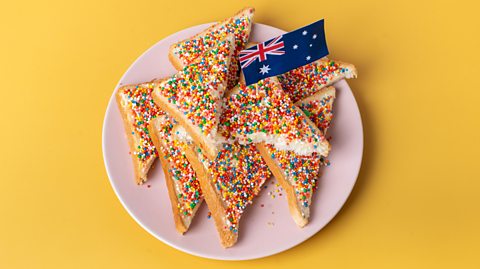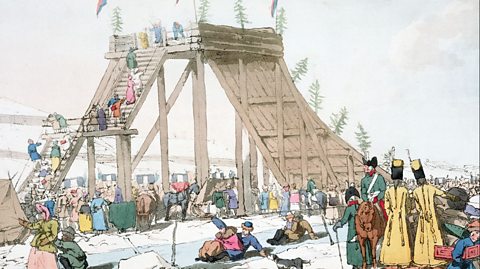Happy birthday to you, happy birthday to youâŠ
Cakes, balloons, candles and gifts. Just some of the things associated with birthdays. But for some countries, marking the special day of a loved one comes with its own unique traditions and rituals. From celebratory songs to delectable sweet treats, ±«Óătv Bitesize takes a look at some of the ways birthdays are celebrated across the world.

Australia & New Zealand
For many countries and cultures, indulging on sweet treats during a birthday celebration is nothing new. But when it comes to the special day, Australia and New Zealand have their own dessert. Fairy bread is a slice of white loaf which has been spread with butter or margarine and then covered in rainbow sprinkles. It is typically cut into triangles and is a popular feature at childrenâs parties.
While the recipe may seem simple, the origins of fairy bread arenât entirely clear cut. An article in a Tasmanian newspaper from 1929 is argued to be the first report to mention fairy bread, listing the ingredients it is known for today. But its linguistic history spans back even further. Some scholars speculate that the term was coined from a 1885 poem of the same name by Robert Louis Stevenson in an anthology called A Childâs Garden of Verse.
Its closest relative is the Dutch breakfast snack hagelslag, which consists of bread covered in chocolate sprinkles. But good news for those with a sweet tooth is that hagelslag isnât just reserved for birthday parties. It can be enjoyed anytime - result!
China
While a birthday cake in Chinese culture is optional, longevity noodles are a staple. In China, longevity noodles are served to the birthday person and, as the name suggest, symbolise long life. While the type of noodle used varies from region to region, itâs typically agreed the long noodle strands shouldnât break or be bitten before they are eaten by the birthday person.
The noodle has been a popular food for at least 2,000 years and one of the earliest record of noodles in China appears in a book written during the East Han Dynasty between 25 and 220 A.D.
The longevity noodle is also central to celebrations in other East Asian countries such as Singapore and the Philippines. The dish is also a popular choice for the Lunar New Year, another celebration filled with food, rituals and symbolism.
In 2017, a food manufacturer in Henan, China, broke the world record for creating the longest noodle. The noodle measured 10,119ft (3,084m), took 17 hours to roll out and was eventually served to over 400 people.

Mexico
During a birthday celebration in Mexico, the tradition of la mordida, which translates to âthe biteâ, may take place. The ritual begins when the birthday person receives a cake, makes a wish and blows out the candles. A friend or family member will then push the birthday person's face into the cake as they take the first bite, while the guests cheer âMordida!â.
The birthday person is often serenaded by friends and family with the song Las Mañanitas, meaning âlittle morningâ. This is usually sang early in the morning to wake the person up or before eating cake.
A piñata may also be involved in the birthday party, otherwise known as a fiesta. These colourful creations are usually made from papier-mùché and filled with sweets ready to be smashed to smithereens by both children and adults alike. The custom has been taken up by many other countries, including Spain and the United States.
While they are considered a significant part of Mexican culture, the origins of the piñata is still subject to historical debate. Some academics argue the tradition can be traced back to the Aztecs, who decorated and broke clay pots to celebrate the birth of the Aztec god, Huitzilopochtli. Others believe it has origins in China, a ritual that was later witnessed and spread across Europe by the 13th-Century explorer Marco Polo.
This article was published in September 2023

The topsy-turvy history of the theme park
±«Óătv Bitesize explores the long and surprising history of the theme park.

When beds made history
Explore stone 'mattresses' from 5,000 years ago, Van Gogh's bedroom and John and Yoko's protest from a hotel room

The amazing creatures that never stop growing
Discover how and why some plants and animals simply never stop growing, as long as their environment allows.
